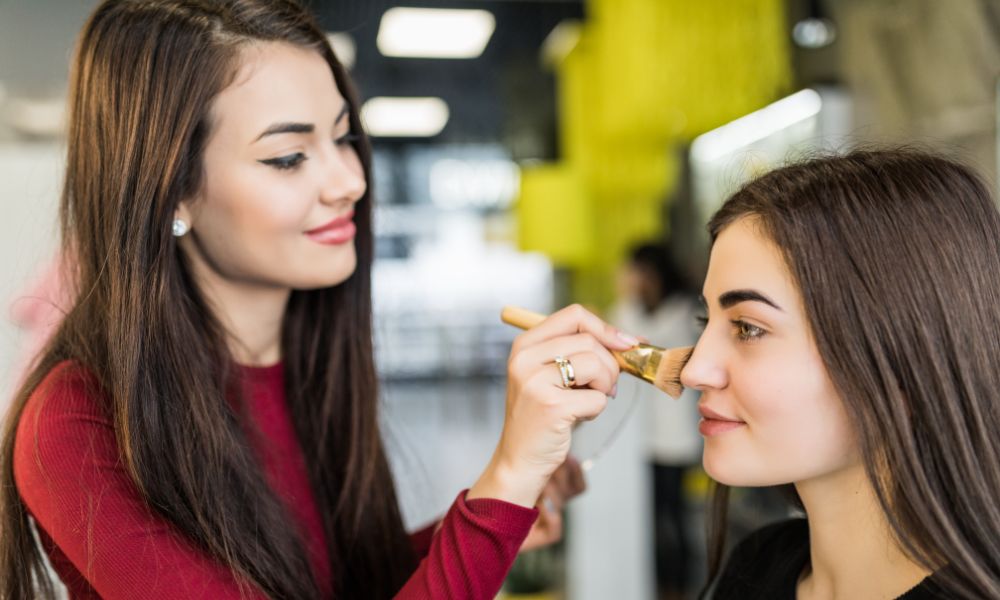When it comes to choosing the perfect makeup application method, two popular techniques stand out—airbrush and traditional makeup. Both have their unique advantages, but knowing which one suits you best can make all the difference, especially for weddings, photoshoots, or special events. Professional makeup artists in dwarka often weigh skin type, occasion, and desired finish before making their recommendation. Let’s dive into the differences, benefits, and expert opinions on airbrush vs. traditional makeup.
What is Airbrush Makeup?
Airbrush makeup involves using a specialised airbrush gun that sprays a fine mist of foundation onto the skin. This creates an ultra-light, seamless layer that looks flawless both in person and on camera.
Key Features of Airbrush Makeup:
- Even and lightweight application
- Long-lasting wear, often up to 12–18 hours
- Hygienic, since brushes and sponges are not used
- Ideal for HD photography and videography
What is Traditional Makeup?
Traditional makeup is the classic method where products are applied using brushes, sponges, or fingers. It allows for more control over blending and layering.
Key Features of Traditional Makeup:
- Offers flexibility in coverage (light to heavy)
- Works well with different product types (creams, liquids, powders)
- Easier to touch up throughout the day
- More affordable compared to airbrush techniques
Comparing Coverage and Finish
Airbrush Makeup
Airbrush provides a smooth, flawless finish that photographs beautifully. It offers medium coverage but can be built up for full coverage without feeling heavy. Its mist-like application blurs imperfections and gives skin a soft, natural glow.
Traditional Makeup
Traditional makeup offers versatility in coverage, ranging from sheer to full. It can conceal stubborn blemishes or discolouration better with layering. However, it may appear heavier if too much product is used.
Longevity and Durability
- Airbrush Makeup: Known for its staying power, it resists sweat, humidity, and tears, making it the preferred choice for brides and stage performers. Once set, it rarely requires touch-ups.
- Traditional Makeup: While long-lasting formulas exist, traditional makeup may need reapplication or touch-ups, especially in hot or humid conditions.
Comfort and Feel on Skin
- Airbrush: Feels extremely lightweight and breathable. Many clients describe it as “barely there.”
- Traditional: Depending on product layers, it can sometimes feel heavier, but modern lightweight foundations have improved comfort significantly.
Skin Type Considerations
- Oily Skin: Airbrush makeup may not adhere well to very oily skin without proper priming. Traditional matte foundations often perform better in controlling shine.
- Dry Skin: Airbrush formulas can cling to dry patches. Traditional hydrating foundations and cream products blend more smoothly.
- Sensitive Skin: Both methods can work, but sensitive skin types should patch test airbrush formulas since some contain silicone.
Cost and Accessibility
- Airbrush Makeup: More expensive due to specialised equipment and products. Often offered as a premium service by professionals.
- Traditional Makeup: Budget-friendly and accessible, with endless product options across price ranges.
Professional Recommendations
Most professional makeup artists agree that the choice depends on the event and skin type:
- For weddings and photography, airbrush is highly recommended because of its durability and flawless HD finish.
- For everyday wear or casual events, traditional makeup is more practical, affordable, and easier to manage.
- Many artists also combine both techniques—using traditional makeup for areas needing more coverage and airbrush for an overall polished look.
Pros and Cons at a Glance
Airbrush Makeup Pros:
- Long-lasting and sweat-resistant
- Smooth, lightweight finish
- Perfect for photography
Airbrush Makeup Cons:
- Expensive and less accessible
- Not ideal for very dry or textured skin
Traditional Makeup Pros:
- Affordable and versatile
- Easy to blend and touch up
- Works for all skin types
Traditional Makeup Cons:
- May require frequent touch-ups
- Can look heavy if over-applied
Conclusion
Both airbrush and traditional makeup have their place in the beauty industry, and the right choice depends on your skin, occasion, and budget. If you’re preparing for a big day with cameras flashing, airbrush makeup is often worth the investment. For everyday looks or versatility, traditional makeup remains a trusted favourite. Professional artists recommend understanding your needs first, then choosing the technique that will make you feel confident and radiant.
Don’t miss: The Science of Makeup: Understanding Skin Types Before Applying Products

